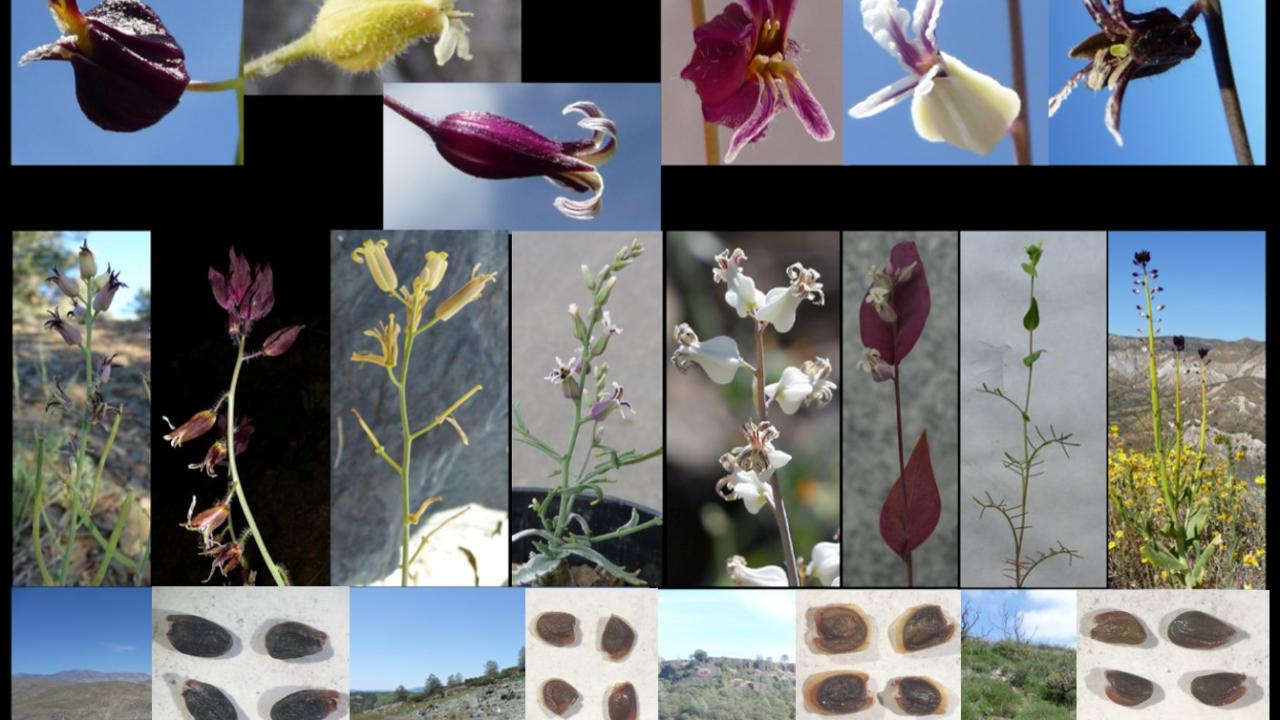
Investigating the Jewels of Climate Change: $2 Million NSF Grant to Explore Environmental Responses in Wildflowers
Quick Summary
- Plants anticipate suitable growing conditions by using cues like temperature, day length and rainfall
- Researchers want to understand connections between these cues, genetics and germination
- They'll do so using jewelflowers, a diverse group of wildflowers that live in the California Floristic Province
Under climate change, California’s native plants will face considerable changes in temperature and rainfall. Since plants are rooted in place, they must have strategies to deal with these changes. In order to persist, “timing is everything,” according to Assistant Professor Jennifer Gremer, Department of Evolution and Ecology.
One of the ways plants anticipate suitable growing conditions is to use specific environmental cues like temperature, day length and rainfall, which together can stimulate germination and flowering. Mistiming germination can cause death or reduced fitness in a plant, so germination cues are critically important.
Determining how the planet’s plants will respond to changing environments is a monumental task, but thanks to a nearly $2 million grant from the National Science Foundation, Gremer and her College of Biological Sciences colleagues will investigate how environmental factors influence the germination of California wildflowers, when these organisms transition from durable seeds to vulnerable seedlings.
“We know that plants have evolved a wide diversity of strategies in order to time this transition correctly,” said Gremer. “It’s a critical stage and timing that transition is really important to the success of that seedling, which then scales to influence the success of that population and the distribution of species across landscapes.”

Strong impacts, unpredictable changes
Gremer and colleagues will investigate this process using species of jewelflowers (Streptanthus), a diverse group of native wildflowers that live in the California Floristic Province, a hotspot of biodiversity that stretches across the state down into Mexico and boasts over 6,500 plant species. The California Floristic Province experiences a mediterranean climate, which is characterized by wet winters and dry summers.
“This is also an area that is expected to experience strong impacts from climate change,” said Gremer. “Mediterranean environments tend to be variable, unpredictable environments and they’re likely to get more variable and more unpredictable in the future.”
According to Gremer, the team will collect seeds from climatically diverse areas within the California Floristic Province and bring them back to UC Davis where they’ll do experiments to characterize how seeds are responding to things like temperature, moisture and day length, exploring the flexibility of their germination requirements.
The team will record how seeds and seedlings respond to environmental cues, collecting data on observable characteristics. They’ll then try to pin down how genes and pathways are expressed under different environments.
“We’re also going to see how germination timing affects later transitions, like the transition to flowering,” said Gremer. “So we are looking beyond just germination.”
Investigating the past to predict the future
The project will also unite the present with the past. According to Gremer, Professor Sharon Strauss, Department of Evolution and Ecology and a co-principal investigator on the project, and collaborator N. Ivalu Cacho, of the National Autonomous University of Mexico, developed a comprehensive evolutionary history of native jewelflowers within the California Floristic Province. Using that history, they will explore how cues may have evolved across the group and in relation to the environments different species occupy.
“We’ll also use herbaria collections to understand the relationship between the climate experienced by a plant specimen during its growing season and its seed production or fitness,” said Gremer.
By combining these data streams, the team will create models of past and current responses to the environment and use them to predict how jewelflower species might respond to future conditions expected under climate change.
“An integral part of our grant is understanding those different types of mechanisms, both the genetic and functional mechanisms, driving these environmental responses and how that leads to things like population persistence and species range distribution,” said Gremer. “Understanding how these patterns are shifting through time is going to be really important to understanding what they’re going to do in the future.”
Professor Julin Maloof, Department of Plant Biology and the Genome Center; and Distinguished Professor Johanna Schmitt, Department of Evolution and Ecology and the Center for Population Biology, are also co-principal investigators on the project.
